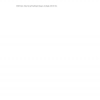Free Online Productivity Tools
i2Speak
i2Symbol
i2OCR
iTex2Img
iWeb2Print
iWeb2Shot
i2Type
iPdf2Split
iPdf2Merge
i2Bopomofo
i2Arabic
i2Style
i2Image
i2PDF
iLatex2Rtf
Sci2ools
KIC
2000
2000
Knowledge Discovery and Data Mining within a Design Environment
Designers, in the process of satisfying design requirements, generally encounter difficulties in, firstly, understanding the problem and secondly, finding a solution [Cross 1998]. Often the process of understanding the problem and developing a feasible solution are developed simultaneously by proposing a solution to gauge the extent to which the solution satisfies the specific requirements. Support for future design activities has long been recognised to exist in the form of past design cases, however the varying degrees of similarity and dissimilarity found between previous and current design requirements and solutions has restrained the effectiveness of utilising past design solutions. The knowledge embedded within past designs provides a source of experience with the potential to be utilised in future developments provided that the ability to structure and manipulate that knowledge can be made a reality. The importance of providing the ability to manipulate past design knowledge, a...
| Added | 01 Nov 2010 |
| Updated | 01 Nov 2010 |
| Type | Conference |
| Year | 2000 |
| Where | KIC |
| Authors | Mark K. D. Haffey, Alex H. B. Duffy |
Comments (0)

